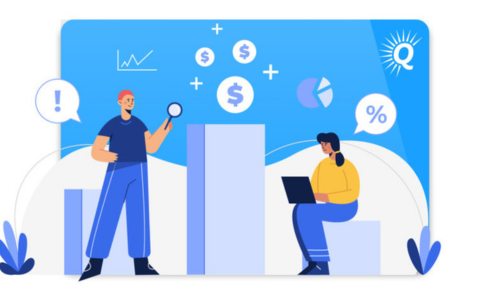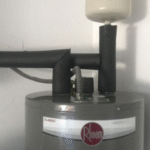There’s something fascinating about the way business owners talk about their companies — like proud parents describing their children. And it makes sense. A business isn’t just an income stream; it’s years of work, late nights, risks taken, and lessons learned the hard way. But when it’s time to sell or value that business, emotion takes a backseat. Numbers take over. That’s where SDE and EBITDA come in — two metrics that translate your effort into something the market can actually measure.
The funny thing? Most people throw around these terms without really understanding what they mean. So, let’s unpack them. No jargon. No MBA-speak. Just real talk about what these numbers say about your business and how much it might actually be worth.
Seeing Through the Lens of SDE
Before we talk about how businesses are priced, let’s start with SDE. The sde meaning business is “Seller’s Discretionary Earnings” — basically, the total financial benefit an owner gets from running the business. Think of it as the true take-home value, not just what’s left on your tax return after the accountant works their magic.
Here’s what’s inside SDE: your salary, any perks or benefits you pay yourself through the business (car, insurance, phone bills — we see you), and adjustments for one-time or non-recurring expenses. In short, it’s profit reimagined through the lens of ownership.
Let’s say your company shows $200,000 in profit on paper, but you also pay yourself $80,000, and you ran $10,000 worth of personal travel through the business. Realistically, your SDE is closer to $290,000. That’s the amount a new owner could expect to earn if they stepped into your shoes.
SDE makes small and mid-sized business valuations far more personal. It cuts through accounting tricks and shows what the business really produces for a single owner-operator.
Why SDE Matters When Selling a Business
For buyers, SDE is gold. It helps them understand what kind of lifestyle or return they can expect from purchasing your company. For sellers, it’s a way to justify value beyond what’s on paper.
In the world of small business sales, SDE isn’t just a number — it’s the heartbeat of valuation. Brokers and investors use it to compare opportunities, set fair asking prices, and negotiate deals that make sense for both sides.
However, the tricky part lies in the adjustments. Not every add-back is legitimate. Some sellers get creative, trying to inflate SDE by excluding expenses that will occur for the next owner. Smart buyers spot those red flags instantly.
The best valuations, then, come from transparency — showing exactly what the business earns and how it can continue to perform without the current owner’s “magic touch.”
Getting to the Root of SDE in Business Terms
So, if you’re wondering about sde business meaning, it’s essentially a normalized measure of the business’s earning potential — the money available to a new owner once all operating costs are covered. It’s different from EBITDA, which focuses more on the company as an investment asset.
SDE assumes the new owner will be actively involved in operations, while EBITDA assumes more of a hands-off investor role. That’s why SDE is more common in small business transactions, like franchises, local service companies, or family-owned operations.
Think of it this way: if you’re buying a landscaping company, you care about how much you can make running it day-to-day. But if you’re buying a manufacturing firm as part of a portfolio, you care more about its operating profit independent of you. That’s the key distinction.
How Multiples Come Into Play
Once your SDE is established, the next question is — how do you price it? Enter multiples.
Buyers and brokers often talk about valuation in terms of “multiples of earnings.” Essentially, it’s a shorthand for how many times a company’s SDE or EBITDA someone is willing to pay. And if you’ve ever wondered what multiple of ebitda do companies sell for, the answer is — it depends.
Small, owner-operated businesses typically sell for 2x to 4x their SDE. So, if your business makes $300,000 in SDE, you might sell it for anywhere between $600,000 and $1.2 million. Larger companies, particularly those valued using EBITDA instead of SDE, can command 6x to 10x multiples — sometimes even higher if growth prospects are strong.
The multiple reflects more than just profit; it reflects risk, stability, and potential. A steady, recurring-revenue business with clean books and low customer concentration will always fetch a higher multiple than a chaotic, seasonal operation dependent on one big client.
The Subtle Art of Valuation
Business valuation isn’t an exact science. It’s a dance between data and emotion. Numbers set the framework, but perception, timing, and narrative seal the deal.
For instance, imagine two businesses with identical SDEs of $250,000. One has automated systems, loyal employees, and consistent cash flow. The other relies heavily on the owner’s personal relationships and long hours. Guess which one sells for more?
Buyers aren’t just purchasing numbers — they’re buying predictability and peace of mind. A business that can thrive without its current owner at the helm is inherently more valuable.
This is why preparation matters long before you decide to sell. Cleaning up financials, documenting processes, diversifying your customer base — these things quietly push your multiple higher without you realizing it.
EBITDA vs SDE: Two Languages, One Goal
If SDE is the language of small business sales, EBITDA is the language of corporate finance. Both measure performance, but they tell slightly different stories.
EBITDA (Earnings Before Interest, Taxes, Depreciation, and Amortization) strips out financing and accounting factors to focus purely on operational efficiency. It’s the go-to for private equity firms and institutional investors — a neutral measure that allows comparisons across industries and geographies.
SDE, meanwhile, includes personal elements. It recognizes the owner’s direct involvement and the perks that come with it. You could say it’s EBITDA with a human touch.
In practice, when a business grows beyond owner-dependence — say, when it has a strong management team and repeatable systems — it often transitions from SDE valuation to EBITDA valuation. That shift alone can multiply its market value several times over.
The Takeaway: Numbers Tell Stories, But People Close Deals
When you boil it down, both SDE and EBITDA are simply tools to help people understand businesses — what they make, what they could make, and what they’re worth to the next person.
The secret to getting the best valuation isn’t just having high profits — it’s having clean, credible, and consistent data. Buyers want confidence that what they see on paper reflects reality.



